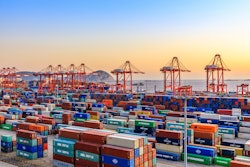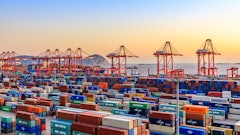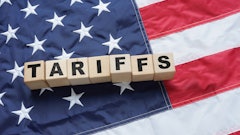
Although U.S. manufacturing accounts for only 8% of total employment, the Reshoring Initiative found reshoring created 20% of manufacturing jobs in the last 15 years, with half of these created in the past five years, largely due to policy initiatives.
Meanwhile, a Bank of America Global Research survey found only 20% of respondents expect significant reshoring, while 40% call for mild relocation to the United States within select sectors, including electronics, biotechnology, metals and mining. These sectors are more capital- than labor-intensive and are expected to take 1-3 years to complete any reshoring initiatives.
Key takeaways:
• Mexico is considered to be a net beneficiary from the push from cost efficiency to geopolitical risk management. Now geo-fragmentation means it’s about producing where it’s safest – a risk management-driven allocation of capital.
• Since 2018, China has lost 7.7 percentage points (pp) of its share of U.S. imports to Vietnam (+2.1pp), and more recently, to Mexico (+2.0pp). At the same time, China is increasingly trading more with countries like Vietnam and Mexico at the expense of the United States and Japan.
• The Trump administration declared several objectives when discussing tariffs: trade rebalancing, reshoring of manufacturing jobs to the United States, fiscal revenues, and leverage in negotiations. However, some of these objectives may be contradictor.
• Reshoring and foreign direct investment (FDI) have created about 2 million jobs (around 20% of total manufacturing employment) in the last 15 years, according to the Reshoring Initiative. However, close to half of these jobs were created in the last five years. And job creation from initiatives like the Inflation Reduction Act (IRA) and the Creating Helpful Incentives to Produce Semiconductors (CHIPs) Act may be losing steam.
• Despite the relocation of supply chains into the United States, manufacturing employment as a proportion of the total has been moving lower, currently only 8%, down from 30% in the 1980s. However, this isn’t necessarily bad news. Automation and offshoring of labor-intensive activities into low-wage countries have created a more efficient allocation of resources for the United States as well as the rest of the world. In other words, manufacturing careers have been largely replaced with higher-paying services jobs in the United States over the past several decades.
• Automotive has been more impacted than branded pharmaceuticals, while semiconductors were spared, etc.
• Metals and mining, electronic manufacturing services, biotechnology and pharma (included in both consumer goods and national security categories) and homebuilders are where reshoring may be more significant. Capital-intensive sectors attracting reshoring are more prone to automation
• Beyond reshoring, the push from cost efficiency to geopolitical risk management in supply chains can also manifest in relocating to other countries (i.e. friend- or nearshoring). While the total impact is yet to be fully determined, Vietnam, Mexico, India, and Thailand, rank high as potential beneficiaries from relocation out of China.
• Additionally, Mexico should be a net beneficiary in transportation, food and beverages, restaurants, and homebuilders. Even though 30% of respondents expect some “swap” of production between the United States and Mexico, depending on the final destination of goods, 28% of analysts expect it to become a net beneficiary of higher tariffs. Most likely, this reflects an expectation of a continued decoupling from China and USMCA countries facing much lower tariffs than the rest of the world.
• U.S. reshoring is unlikely to drive significant increases in U.S. employment, given that increased production and labor costs are a primary concern deterring most sectors from reshoring. And those companies that do end up reshoring are likely to offset associated costs via increased automation of production lines. Moreover, the greatest shift in production will not be toward the United States, but alternative centers of low-cost manufacturing, primarily Southeast Asia and Mexico.



















